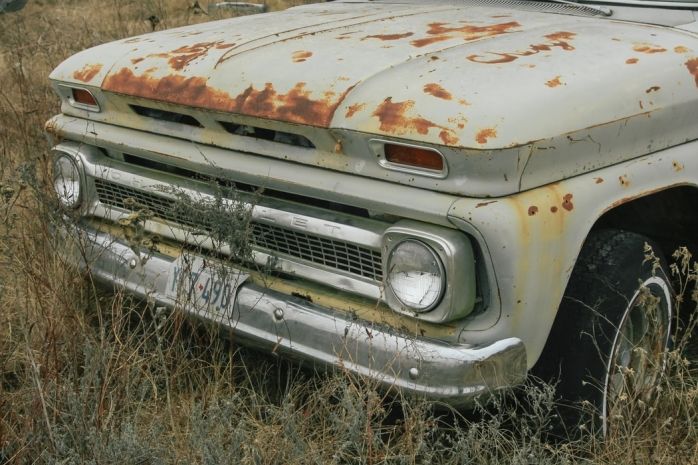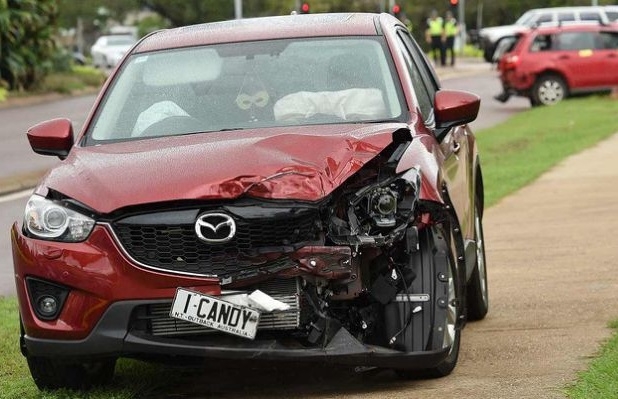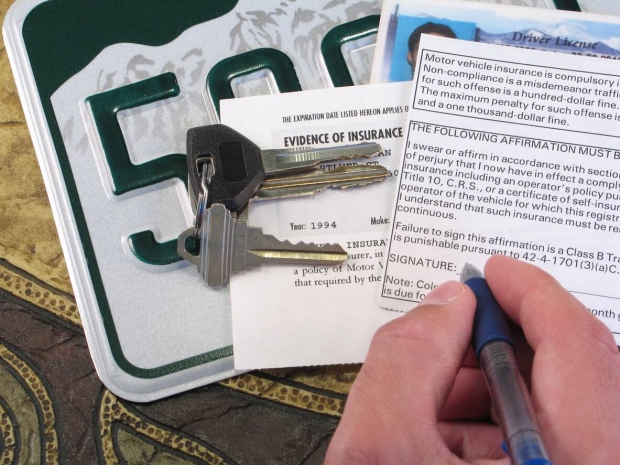A blown-out engine could be the end of the road for your automobile if it’s an old clunker. However, if it’s not that old, you may want to consider buying a replacement motor. In this article, we’ll explain how to determine if the busted engine is dead, discuss some of the causes why the engine fails to crank and address if it can be repaired. We’ll also examine the options of trading or selling a car with engine problems.
If you have a vehicle that’s rolled up its last hill, whether a newer model or 15 years old or more, here’s the information you need to help you decide whether to replace that 4, 6, or 8 bangers, sell it, or trade it.
Make Sure Your Car Has a Blown Engine
A blown engine means your vehicle isn’t going anywhere under its own power. There are often several indicators that your motor is damaged or has problems before it completely fails. If your car’s motor blew up, there’s a high probability that the engine block is cracked or broken.
The engine block
The engine block is a solid cast ‘block’ of iron or aluminum with smooth cylinders cast inside it. The pistons with their rings slide up and down inside the cylinders, and oil minimizes the friction of the moving components. At the bottom of the block are the oil pan or reservoir and the crankshaft. The oil lubricates the moving parts. The pistons turn the shaft on their downward thrust. Then the spent pistons are pushed back up.
The downward thrust is created by an explosion of compressed gasoline and air ignited by a spark plug. The heat generated by the explosion and friction radiates into the metal block. Water channels are cast into the block to prevent overheating. The channels are known as the water jacket, and coolant travels through, absorbing the heat. The coolant moves through the block and into the radiator for cooling before returning to the block to repeat the cycle.
The oil lubricating and coolant systems are vital to the engine’s continued operation. If you start having problems with either, it’s time to act before the engine block is severely damaged.
Mixing of oil and antifreeze
When you change the oil, or it puddles on the ground, it is commonly medium brown to black in color. If it is cloudy white, you know antifreeze is mixing with oil, a sure sign of a crack.
Oil pressure
A drop in oil pressure indicates that something is wrong with the motor. It often means there’s dirt blocking the oil pump pickup, there’s a busted head gasket, or a leak somewhere. A large puddle of oil under the front of your car, no oil on the dipstick, and when you attempt to start it, you hear metal grinding on metal are sure signs you have a cracked block.
Loud sounds from under the hood
A blown motor sound is impossible to notice. You will hear a loud grind sound due to the increased friction, usually because your car is leaking oil. This is one of the best indicators of a motor blown in a car. If you hear a metallic grinding noise coming from the engine when starting or cruising, it is likely a mechanical issue caused by low or no oil to lubricate the moving metal parts.
Engine frequently overheats
If the coolant temperature gauge on the dash indicates the engine is overheating or there is white smoke billowing out from under the hood, you need to check the coolant system. Wait for it to cool down first. If the smoke is coming through the side of the block, there is likely a crack.
Check the antifreeze level, make sure the rad isn’t blocked, and the hoses aren’t damaged or leaking. If those are fine, check the water pump, pulley, and belt are working as they should. If you’ve done all that, and the engine still frequently overheats, and you have to add antifreeze repeatedly, take it to a mechanic.
Poor compression
A crack in the block can compromise the cylinder walls and result in poor compression. As the piston moves through the compression part of the stroke, the gas-air mixture escapes through the fissure. The result is little or no combustion to drive that piston on the power stroke.
Smoking engine
A smoking engine is a sure sign of a problem, especially if combined with other indicators. The exhaust goes out the tailpipe, so smoke under the hood means something is wrong. Bluish, dark gray, or black smoke combined with low oil pressure, rough idle, or loss of power usually means an oil leak and likely a damaged block. If you observe the smoke escaping from the block itself, there is cause for concern.
The block has a visible crack
Checking out the block for a crack may sound simple until you open the hood and start looking. The engine block is often obscured by other components and cables, making a visual inspection difficult.
You may observe smoke or fluid stains or be able to feel the crack—never put your hands near the engine when it is running or hot. You may see smoke escaping from the side of the block, which will assist in locating the crack. If the crack is large enough to see, it’s time to consider your options.
What Causes a Motor to Blow?
Cars and trucks are mechanical beasts with high-performance engines. They commonly operate for hundreds of thousands of miles with comparatively little maintenance. However, there are several symptoms that, if ignored, can cause an engine to blow.
Lack of maintenance
Low oil pressure, frequent overheating, worn hoses, and belts can prevent your automobile’s oil and coolant systems from working. A water pump or pulley failing can also cause overheating, as can a damaged radiator. Regular maintenance and using the recommended fluids will prolong the engine’s life. Changing the oil, flushing and replacing the coolant, replacing worn belts and hoses, maintaining the water pump and pulley all help maintain the motor.
Overexertion on the engine
Making the motor work beyond its power range will cause damage. Hauling excessive loads behind a 4-cylinder, uphill and down, will blow the engine. It can also do the same to more powerful 6- and 8-cylinder workhorses. Adding lifts and oversized tires can also cause overexertion and engine failure.
Engine failure can also be caused by running an engine at high speeds and at excessive revolutions per minute (RPMs) for an extended period of time. To save the engine from wear and tear, ease off on the gas and aim to drive at cruise speeds.
Engine modifications
Modifying an engine with a turbo or supercharger that isn’t compatible can blow the motor. The increased power generates more heat than the coolant system is designed for. The excess heat can make the block break or crack.
Temperature
The coolant used in an auto is rated for different operating temperatures and climate temperatures. Diluting the coolant with water or a differently rated coolant can cause the block to crack. Cold climate coolants stay liquid at extremely low temperatures, whereas warm or summer weight liquids can freeze. If the coolant freezes, it can crack the block.
Can You Fix a Blown Engine? Is There Any Reason?
The engine block is cast iron or aluminum; it is one solid piece of metal. Repairing a crack depends on its location and size. Larger cracks and those on the lubricant side of the block signal the need for a replacement block. If it is a tiny crack on the outer water jacket surface, it may be possible to seal. However, the repair could cause further damage, and the location will remain a weak point.
A hairline crack in the outer shell of the water jacket may be repairable. The least expensive option is to try one of the commercial sealants. They may seal a narrow crack in the water jacket and delay or prevent a more expensive solution. If the sealant doesn’t work, your cost is minimal compared to the other options.
If you’re wondering if you can fix a blown engine, the answer is an emphatic “maybe.” You could consider using an arc welder and special rods to seal the crack. The heat, unfortunately, could deform the area and make it more brittle and thus weaker.
Cold metal stitching is another possibility, as is a cold welding patch. Both solutions are susceptible to extreme heat and subject to failing, so it’s not really fixed. You must weigh the repair cost against the car’s value with a blown engine and a replacement block. So maybe you must think about consider selling your totaled car.
Will a Blown Engine Still Run?
Yes, you can still run a car, but it will labor and die out constantly, but it can still run for short distances. Blown motor cars can overheat quickly or leak out oil and fluids if they have cracks or warping. If your car’s motor has blown up, you should not try to start it again, but if you’re only a short distance away from a mechanic or your own garage, you can try to run the car to park it properly. If your engine keeps overheating, stop the car after a few hundred meters and let the engine cool down. After 3 or 4 restarts, you should be able to reach your destination without doing further harm to the engine.
If the engine is leaking oil, you can pour some extra oil to replace the losses. A liter of engine oil should be enough to last for a few hundred meters.
But, to really protect your car from further damage, you should call a towing company. You’ll pay for the tow, but you’ll keep your car safe from more harm. This is one of the best advantages of getting the service of a trustworthy junk car buyer like JunkCarsUs because we include free towing with every deal.
Options for Selling a Car with a Blown Motor
An automobile with a cracked block can be repaired, replaced, or sold as-is. To repair or replace can range between $3k and $5k, or much more depending on the make and model. If it isn’t worth the cost to make it work, you have a couple of options on what to do with a car with a blown engine.
Sell the car as is
Instead of sinking more money into your car, check out how to cash for car with broken engine. Post it online, in the papers, or on community boards. Make sure you list it “As is” so buyers know you want to sell a car with a bad engine. They may want it for parts or as a project and have the skills and time you may not.
Sell the car to a junkyard
If you can’t find who buys cars with blown engines or just want to get rid of your troublesome old coupe, check out the local scrap and junkyards. Check online or phone around for the best offer. Most yards will take cars with blown engines, providing proof of title or the registration proving ownership.
Be honest about the condition and the engine issue. Some scrap dealers will offer $60 to $70 a ton; others make their offer based on the salvage and potential sale of parts and offer a better rate.
Sell the car parts
A blown engine may render your vehicle powerless; it doesn’t, however, make it worthless. If you don’t mind getting dirty, have the tools and the time to consider selling the old chariot for parts.
Most automobiles are made up of more than 30,000 parts, which is where the value of a car with a bad engine is. Some aren’t worth much, others ranging in value from pennies for clips and washers to $100 plus for tires and rims, alternators, exhaust systems, and even the radio. List them on Craigslist, eBay, or other platforms.
Preparing your car for sale
Before you hand over the keys and ownership, you should go through your car. Clean out any garbage and personal items. Check under the seats, in the consoles and glove compartment, in-door pockets, and clean out the trunk. If you bought a special jack and jumper cables, take them too.
Remember to get your insurance papers and license plates and check the CD player for any discs. Once the vehicle is gone and the cash is in your pocket, contact the insurance company to cancel the policy or transfer it to your new car. The same goes for the plates, transfer them to the replacement ride, or cancel them.
Try to salvage any valuables
If you’re selling the car for scrap, then you should at least take out any parts that can still be resold or repurposed. Older cars may have genuine parts like emblems, branded stick shift handles, rearview mirrors, and other parts that can be used for restoration projects.
Since the car is being sold for scrap, these small parts should not affect the selling price. You can then post these parts on eBay, Facebook Marketplace, or Craigslist for some more cash.
Best Way to Trade in Cars With a Blown Engine
A motor blown in a car can cut the resale value. However, choose to trade your blown car for a new or used one. With more than 18,000 new car dealerships and over 140,000 used dealers in the US, all looking for business, you just need to shop around. Many will give you a discount on your purchase, and some won’t. Remember, you’ll have to deliver it to them. Check around and see what you can get, then give us a call and see if we can do better. We’ll even pick it up!
Conclusion
Hopefully, you have a better understanding of what can cause your motor to blow, how to prevent it, and if it’s worth fixing. A blown engine may be the death knell of your car, especially if it’s an older model and doesn’t have much value. Whether you decide to trade in a vehicle with a bad engine, sell junk cars for cash, or junk it, contact us. We pay top dollar for any car, truck, or van, even with a crippled engine!
FAQ
How can I tell if a car engine is blown?
The first sign is a non-starting engine, which could be due to a blown gasket or a cracked engine block. Another is if your engine emits white or blue smoke from your car’s exhaust pipe. Check also if there's a knocking or rattling sound from under the hood. If the car runs but overheats quickly is also a sure sign of a blown-out engine.
What happens when an engine blows while driving?
Your car would run erratically if your motor blew up while driving, generating weird metallic noises or knocking sounds. More noise, smoke, and vibration are produced when an engine blows. The engine’s temperature may also rise, and the engine indicator might light up. All of these are indicators that something is wrong, and you should pull over immediately.
Can I drive a car with a blown engine?
Yes, a car with a busted engine can still run on most occasions. In the event of a head gasket failure, the engine will still crank but expect oil to leak. Overheating is also a common cause for a blown engine. In this case, you can cool down the engine first, then try to start and run it for short distances only.
Can a blown engine be fixed, and how much will it cost?
If you have a blown or busted engine, an engine resurface or gasket replacement can be enough to fix it. If the damage is severe, you may need to replace the entire engine. Most passenger automobile engines can be replaced for $3,000–$4,000, while new engines can cost $4,000–$6,000. A luxury, SUV, or European automobile will set you back an additional 50% to nearly twice the price.





